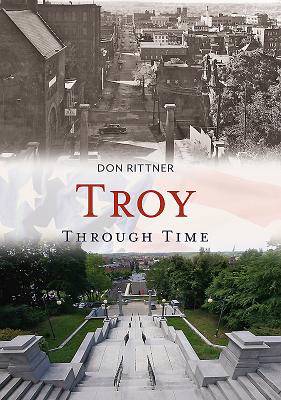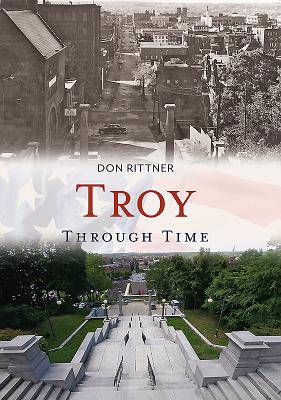
Je cadeautjes zeker op tijd in huis hebben voor de feestdagen? Kom langs in onze winkels en vind het perfecte geschenk!
- Afhalen na 1 uur in een winkel met voorraad
- Gratis thuislevering in België vanaf € 30
- Ruim aanbod met 7 miljoen producten
Je cadeautjes zeker op tijd in huis hebben voor de feestdagen? Kom langs in onze winkels en vind het perfecte geschenk!
- Afhalen na 1 uur in een winkel met voorraad
- Gratis thuislevering in België vanaf € 30
- Ruim aanbod met 7 miljoen producten
Zoeken
Omschrijving
Troy is one of the most historic cities in the United States. Originally the home of the Mohican tribe, the area was settled by the Dutch in the early eighteenth century and the city itself was founded by the Vanderheyden family in 1787. Troy holds claim to being the birthplace of America's Industrial Revolution, and a major manufacturer of iron products during the 1800s. Troy has earned some distinctive titles in its 230 years of existence, and was referred to as "The Home of Uncle Sam," and "The Collar City." In his latest book, Troy Through Time, local historian Don Rittner looks at the city's rich heritage and with informative captions provides comparative then and now photographs showing the dramatic changes the city has gone through--especially during the past century. Due to the confluence of major waterways and the accompanying water power, industry favored Troy making it one of the wealthiest cities in the United State and the end of the nineteenth century. Troy, therefore, is noted for a wealth of Victorian architecture downtown and elaborate private homes in various neighborhoods. As industries have come and gone and as the street scenes have changed, Rittner takes the reader on a fascinating journey through time, showing how the impact of human activity to this riverside community.
Specificaties
Betrokkenen
- Auteur(s):
- Uitgeverij:
Inhoud
- Aantal bladzijden:
- 96
- Taal:
- Engels
Eigenschappen
- Productcode (EAN):
- 9781635000528
- Verschijningsdatum:
- 11/09/2017
- Uitvoering:
- Paperback
- Formaat:
- Trade paperback (VS)
- Afmetingen:
- 160 mm x 234 mm
- Gewicht:
- 376 g

Alleen bij Standaard Boekhandel
+ 63 punten op je klantenkaart van Standaard Boekhandel
Beoordelingen
We publiceren alleen reviews die voldoen aan de voorwaarden voor reviews. Bekijk onze voorwaarden voor reviews.









